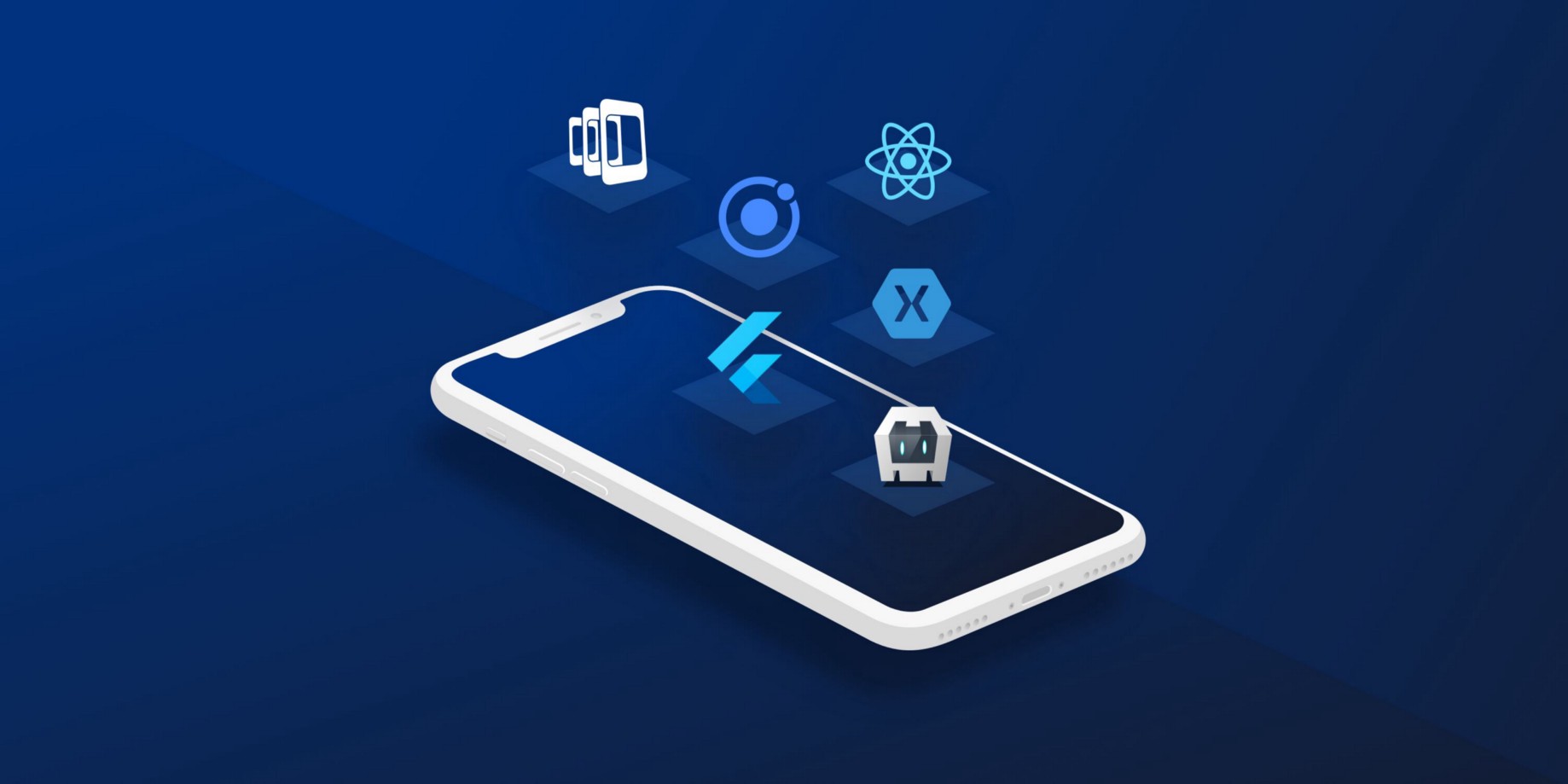A comprehensive Guide on Application Development

In the ever-changing world of technology, creating a great app requires more than coding. It requires strategic thinking, meticulous planning, and complete user requirements knowledge. This comprehensive book will help you navigate the process, whether you're an experienced developer or a rookie just starting out in application development.
What is application development?
It is common practice to refer to application development as software development. Application development is the process of developing computer programs or applications that are designed to carry out particular tasks or services for end-users or other systems. These applications might range from straightforward mobile applications to intricate software solutions designed for enterprise-level use. Applications are developed with the intention of designing, coding, testing, and deploying software that satisfies the requirements of the consumers for whom it is designed.
Important app development phases
Application development frequently involves several crucial phases, each of which is crucial to project success. The following steps are crucial to app development:
Conception and Planning
Every project starts with project ideation, before Discovery or requirements analysis. Customers quickly inform the engagement manager of their needs, goals, and product vision when they make a request. In fact, if the project concept is hazy and requires evaluation of the target audience and market trends, ensuring that it benefits end-users, calculating costs and time, and revising requirements, a client may choose the Discovery phase service. The expert team should have a consistent project picture during needs requirements and client enhancement negotiations.
Requirements Analysis
The requirements analysis should be done professionally and ensure that you understand end users' wants and meet their expectations. The most important business, user, and system requirements can be grouped from high-level to specific. The last factor is the system's capabilities, performance, and suitability for the user's goals and perspective. After analyzing all criteria, project cost must be determined. Timeframe, pricing, labor efficiency, resources needed, and more.
Design and development
Next comes design and development. Application development revolves around this essential phase. It's more design than development at this point. During this app development stage, you must:
- Define your application goals.
- Describe your product idea.
- Who would benefit from this solution?
- Want to make it? Why?
You can learn, figure out, and visualize your product during product discovery.
Testing
Continuous application testing ensures that all components work as designed and communicate properly. It starts once the application is developed on LCNC platforms or after coding. It finds and fixes defects, deficiencies, and risks. After fixing all validated bugs, a new application version is built. Testing ensures that applications meet initial criteria, preventing corporations from delivering low-quality apps. Testing coding-based applications examines code reliability and lowers user errors, which increases usage and user happiness.
It’s important to continuously test your application
Deployment and Maintenance:
When software testing is complete, code is cleaned up, and there are no issues, the program can be released into the environment for customers to find and use. The software development team checks for issues during deployment. After deployment, software companies provide extra maintenance. This maintenance contains bug fixes, code improvement, and other additions. Successful project completion is marked by app development phases. Agile is one of the most effective methods because it emphasizes activity execution, client goals and expectations, and team adaptability. However, it does not prioritize reporting, paperwork, or preparation without results.
Main application development services
Custom Application Development
Custom application development involves designing, building, and delivering software for specific consumers or use cases. Many companies have specialized HR sites for employees, freelancers, etc.
A recent poll found that up to 80% of firms claim citizen developer bespoke development has provided their IT staff more breathing room. Low-code, no-code - a new type of citizen development has emerged from citizen development platforms. Tech-savvy people of your company's teams can design apps without writing code to optimize business operations.
Custom app development software was previously built by in-house development teams or IT departments. Low-code development platforms allow organizations to construct apps without skilled coders. Custom business apps allow users to design, build, and deploy customized apps. This app has clear specifications that meet the demands of a certain group of users. These apps are designed to handle a distinct problem and optimized for it. Business users can construct apps from scratch using custom application development. Business users have more flexibility and control over their work, reducing IT team dependence.
Advantages of Custom Application Development
Businesses that use custom app development gain greatly. Custom application development has advantages like:
- Cost-effectiveness: Traditional app development is expensive. IT teams build, test, and debug programs after receiving specifications. And this can be expensive. Custom app development involves fewer resources, eliminating the requirement for dedicated resources and lowering application development costs.
- Efficiency is a fundamental selling point of custom applications since they optimize workflows and enhance organizational procedures. They handle business problems more efficiently since they're designed with users in mind or by them.
- Scalability: Your custom solution grows with your business. Building an application tied to a specific function and manner of work lets developers change process steps to handle more requests and data. You won't need to switch solutions to use advanced features and scale.
Disadvantages of Custom Application Development
- Expensive upfront investment: Creating a custom solution typically demands a greater initial investment in comparison to pre-made options.
- Increased Time for Development: Developing a personalized application might require more time compared to using a pre-made solution, which could potentially result in a delay in bringing the product to market.
- Relying on the development team: Organizations may find themselves relying heavily on the expertise of their development team, which can pose challenges when it comes to ongoing support if the team undergoes changes.
Web Application Development
Setting purpose goals is the most crucial step in web app development. This answer should be considered while creating the user interface. Since the user interface is the source of consumer data, developers must build the app to receive and respond to it. Website development involves tasks like:
- Ensure online app compatibility with iOS and Android versions.
- Identify life cycle and optimization data.
- Creating an intelligent, iterative user interface.
Website development involves many tasks
In order to ensure the efficient handling of these web development tasks, it could be advantageous to utilize reputable agencies, such as Axalize, a professional web development company. This provides you with the reassurance that your web application is being developed by experienced experts.
Advantages of web app development:
- Compatible with all operating systems: It has been designed to seamlessly run on any operating system. It should be able to seamlessly work with iOS, Android, and Windows Phone, as well as other operating systems.
- Operates using a simple URL: These applications operate on the device's web browser using a simple URL.
- No download required: They can be accessed and used without the need for downloading and installing them from app stores such as Google Play or Apple's App Store. This results in cost savings as connecting instantly through an internet application incurs no charges.
- Apps are not the only ones that require updates; websites also need to be regularly maintained. This implies that they do not need to be updated in the same manner as typical apps.
- Cost Efficient: The most significant advantage you'll gain from its affordability. It involves establishing a connection between the device and a web address. Creating a native app or an interpreted app can be more expensive, but it greatly increases the likelihood of success.
Disadvantages of web app development
- Non-responsive website causes issue: Data on a responsive website shows accurately on all platforms and screen sizes. Any website issue will affect your app. Without a good corporate website, your web app may not perform properly. If the website's URL takes a long time to load or if unsafe "cookies" appear, accessing it through the appliance will be problematic. This isn't a web app issue. In website development, rather.
- Must have internet: It needs the Internet to run. You must meet these requirements to browse the website.
Enterprise Application Development
Enterprise application development involves designing, building, and deploying software applications that cater to large organizations' specific needs. These applications streamline and automate business processes, foster collaboration, and provide real-time access to critical data. They integrate with existing systems, creating a cohesive ecosystem that enhances productivity and decision-making.
Benefits of Enterprise Application Development
- Improved Efficiency: Automation reduces errors and boosts efficiency in enterprise systems. This lets workers concentrate on high-value tasks, increasing productivity and lowering expenses.
- Better Collaboration: Enterprise apps concentrate data and resources, making collaboration easier. This promotes efficient teamwork and real-time information exchange no matter team location.
- Data-Driven Decision Making: Enterprise apps store and analyze data to guide decisions. These apps help firms make strategic decisions based on reliable data by showing it.
Disadvantages of Enterprise Application Development
Enterprise application development, while essential for optimizing business processes, can come with its own set of challenges and disadvantages. Here are some common drawbacks associated with enterprise application development:
- High development costs: Building effective enterprise applications requires a large upfront investment in development resources, technical infrastructure, and qualified individuals.
- Large-scale enterprise application development takes time. Implementing several systems, maintaining security, and meeting many requirements lengthens development timelines.
- Integration Issues: Integrating new enterprise apps with current systems and databases is difficult. Compatibility difficulties may require careful planning and implementation.
Cloud Application Development
Cloud application development creates cloud-based apps. It involves several software development stages that prepare your program for launch and market acceptability. The best cloud application development teams use DevOps and Kubernetes. However, an expert cloud application development company should be technology neutral and able to design your Cloud app utilizing any technology. Most Cloud-based programs depend on it.
Cloud application development infrastructure can lower development costs, allow remote teamwork, and shorten project durations when used with Agile software development methods. Few firms have the capabilities to handle complex Cloud app development processes. Businesses who want to create web-based Cloud apps should work with a qualified Cloud app developer. Some firms have in-house cloud application development teams, but most hire a cloud services app developer. You can verify an app development company's cloud expertise with AWS certifications.
Advantages of cloud application development
- Cost-effective: Cloud providers charge only for the cloud space and features your application development model needs. This pay-as-you-go strategy is used by all cloud deployment solutions that balance cost and performance.
- Security: Cloud hosts monitor data security alone, which is more effective than in-house solutions. In addition, cloud-based software simplifies legislative security requirements. Changes and data recovery are automatic on the cloud.
- Mobility, insight: A cloud application development platform lets you access data from any device, gadget, team, or company to stay current. providers that use cloud sharing services have higher employee engagement and satisfaction than local hosting providers. Cloud-native application development tailors customer data insights, improving data access speed and experience.
Disadvantages of cloud application development
- Reliability: To run your cloud app smoothly, you need a reliable cloud foundation. Check your cloud vendor's security and make sure it matches your company's demands. As one of the most reliable cloud frameworks, AWS is used for cloud application development. AWS protects data and offers developers many tech options.
- Performance: If your software takes more than 3 seconds to load, user satisfaction will suffer. Global ISPs arrange their servers to guarantee consistent page loading speed anywhere. CDNs are also utilized to speed up content distribution. These are common in cloud app infrastructure. Check your cloud vendor's architecture to ensure your apps' performance stays consistent. Check if apps can be securely migrated to the cloud and track their performance. When your business apps communicate with new cloud services, create a new integration scenario.
- Scalability: To use a cloud app's scalability, evaluate its technological implementation. All cloud firms claim to provide it without trouble, but few can. If your program becomes popular, be sure its backend can handle data flow. Choose hybrid cloud architecture for scalability. A hybrid cloud approach can scale up or down. Consult your software development service provider before applying to a two-dollar scalability software.
Mobile Application Development
App development for mobile devices like smartphones and tablets is called mobile app development. Mobile apps are produced for iOS and Android.
Advantages of Enterprise Application Development:
- Enterprise applications automate and streamline company operations to save time and effort.
- Centralized Data Management: Enterprise programs centralize data for consistency and accuracy.
- Employee Collaboration: Enterprise systems with shared calendars, document management, and communication capabilities improve employee collaboration.
- Access to real-time data and analytics improves data-driven decision-making and corporate outcomes.
- Enterprise applications scale with corporate expansion, supporting more data, users, and transactions.
Disadvantages of Enterprise Application Development:
- Enterprise application development and implementation require significant upfront resources, technology, and training.
- Complexity: Enterprise application design, development, and deployment require trained specialists and careful project management.
- Enterprise application development and implementation may take longer, delaying advantages.
- Change Resistance: Employees may reject workflow changes, making business application adoption difficult.
Pro tips for Application Development
Choose a Namespace
This mobile app development trick distinguishes competent developers from average ones. Successful mobile app development requires creativity, uniqueness, and appeal in every area. User appeal is partly covered by the app name. A sentence-like name isn't desirable for users. Users install, utilize, and speak about an app more if its name is condensed to one word.
Build Right Category
When a customer installs an app from the Google Play Store or Apple AppStore, related app suggestions help new apps reach their users. When you choose the right category, you may target an audience that will like your app.
Test your app in different ways.
After launching an app, test it. A lot. Failure or user frustration under expected situations makes your mobile app unsuccessful. Test across many devices, OS versions, locations, bandwidth restrictions, and significant resource requirements.
Functional testing can check if the user interface works as planned. Laboratory testing in a virtual network environment can determine some. Functional and lab testing should be followed by user testing for optimum input. This helps you identify and learn from user frustrations.
Get user feedback
After testing and fixing any errors, it's time to test your app in real life. User testing by a testing business or rolling out your app to a select set of employees or customers to monitor bugs and solicit feedback are options. Remember that production testing is ongoing. Application development best practices include continuous improvement. Users demand frequent mobile app updates. After your app is widely launched, you must monitor its performance and user input for issues.
Get users feedback to improve your app
Future of Application Development
Technological advancement and shifting user needs will define the future of application development. Here are some areas that may shape application development:
- Low-Code and No-Code Development: The advent of low-code and no-code platforms allows users with minimal coding expertise to create applications. App development will become more democratized, allowing non-developers to create apps.
- Artificial Intelligence (AI) and Machine Learning (ML): Integrate AI and ML into apps for improved automation, personalization, and predictive analytics. Intelligent apps that learn and adapt to user behavior are predicted to grow.
- 5G Technology: The widespread implementation of 5G networks will transform app development. AR and VR experiences will be more immersive and real-time with faster internet rates and lower latency.
- Blockchain Technology: Implementing blockchain in numerous applications can improve security, transparency, and trust. Blockchain can affect DApps and smart contracts.
Finally, application development requires technical expertise, strategic planning, and user needs knowledge. This thorough book covers everything from ideation to deployment and maintenance of a successful application. In this age of digital transformation, where applications drive innovation, your dedication to development will not only help your projects succeed but also advance technology. Please make your apps sturdy, user-friendly, and constructive change agents.
Axalize is a global IT company based in Vietnam, that is committed to delivering IT development services that assist businesses and individuals in transforming their IT visions into tangible solutions. Axalize is dedicated to application development that prioritizes efficiency and security. Our apps work seamlessly on iOS and Android devices, as well as across different platforms. The company has established strong partnerships with a wide range of customers globally, especially in highly competitive markets such as Japan and Korea.


